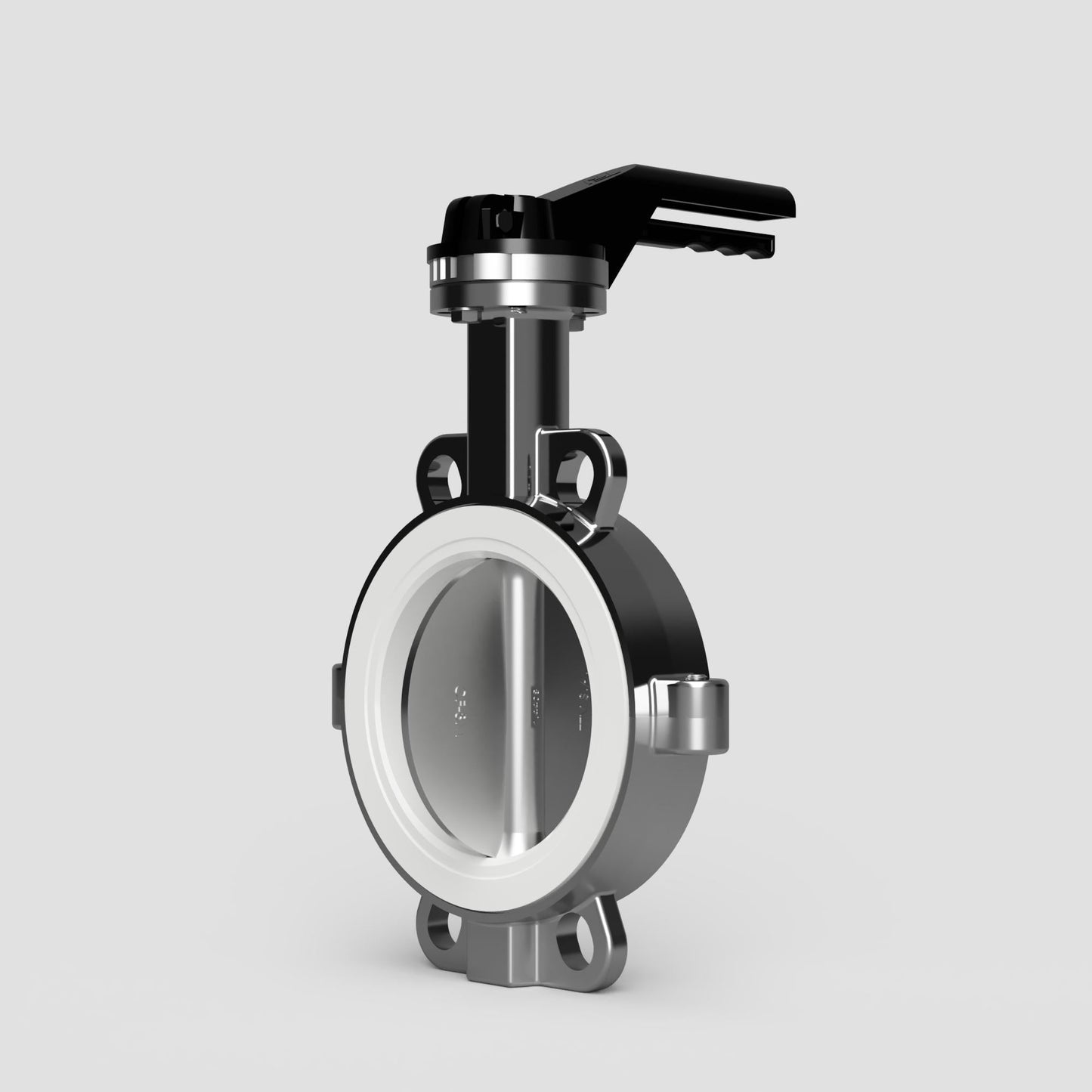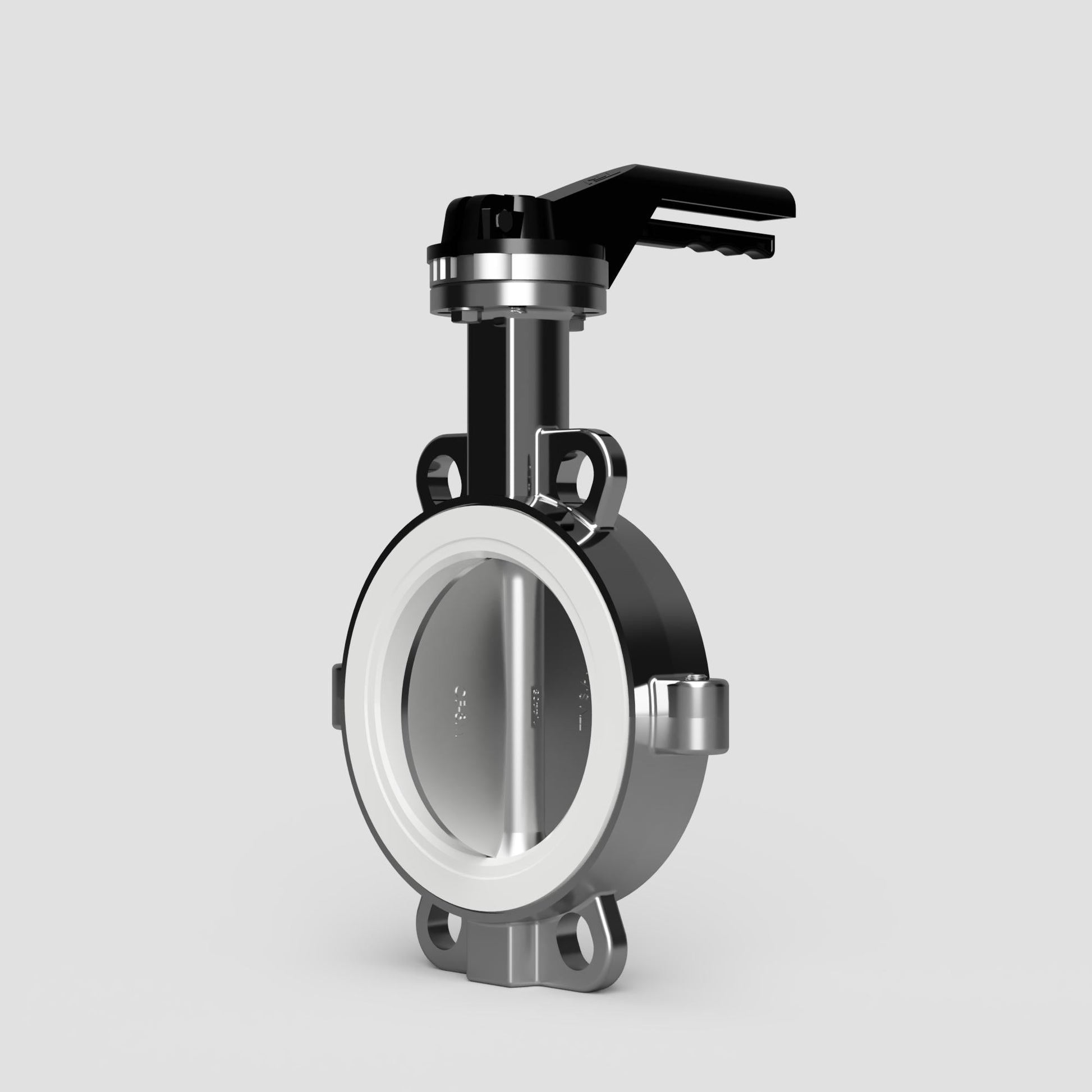Steam Valves
TTV PTFE Seat Wafer Butterfly Valve - Stainless Steel
TTV PTFE Seat Wafer Butterfly Valve - Stainless Steel
Couldn't load pickup availability
The TTV PTFE Seat Butterfly Valve - Stainless Steel is a premium industrial valve engineered for precision and durability in demanding applications. Designed with a PTFE (Polytetrafluoroethylene) seat, this butterfly valve ensures excellent chemical resistance and reliable sealing performance, making it ideal for use in corrosive environments and processes that require high purity standards.
Key Features:
-
Stainless Steel Construction: The valve body is crafted from high-quality stainless steel, providing exceptional strength, corrosion resistance, and longevity. This robust construction makes it suitable for use in harsh environments and ensures a long service life with minimal maintenance.
-
PTFE Seat: The PTFE seat offers superior chemical resistance, making it compatible with a wide range of aggressive chemicals and fluids. It also provides low friction and excellent sealing capabilities, ensuring a tight shut-off and reducing the risk of leaks.
-
High Performance and Versatility: The TTV PTFE Seat Butterfly Valve is designed for versatility, capable of handling a wide range of temperatures and pressures. It is suitable for applications in the chemical, pharmaceutical, food and beverage, and water treatment industries.
-
Easy Operation: This valve features a lightweight and compact design, facilitating easy installation and operation. The quarter-turn operation allows for quick and precise control of flow, enhancing process efficiency.
-
Low Maintenance: The durable materials and design minimize wear and tear, reducing the need for frequent maintenance. The PTFE seat's self-lubricating properties further contribute to the valve's low-maintenance operation.
-
Wide Range of Applications: Whether in chemical processing, petrochemical industries, or water treatment facilities, the TTV PTFE Seat Butterfly Valve is engineered to perform reliably in various industrial applications, ensuring safety, efficiency, and longevity.
Applications:
- Chemical Processing: Ideal for handling corrosive chemicals and aggressive fluids.
- Pharmaceuticals: Ensures high purity and contamination-free operations.
- Food and Beverage: Compliant with hygiene standards for safe fluid handling.
- Water Treatment: Reliable performance in the management of water and wastewater.
Specifications:
- Material: Stainless Steel (Body), PTFE (Seat)
- Size Range: DN40-DN300
- Pressure Rating: PN10, PN16, ANSI 150
- Connection Type: Wafer
Why Choose TTV PTFE Seat Butterfly Valve - Stainless Steel?
When you require a valve that combines robust construction with superior chemical resistance and reliable sealing, the TTV PTFE Seat Butterfly Valve is the ideal choice. Its stainless steel body ensures durability, while the PTFE seat offers exceptional performance in challenging environments. Choose TTV for quality, reliability, and peace of mind in your industrial applications.
Share

FAQ's
What is the difference between a valve and an actuator?
What types of actuators are available?
The main types of actuators are:
Pneumatic actuators – use compressed air for fast, reliable operation.
Electric actuators – use electrical power for precise control.
Hydraulic actuators – use fluid pressure for high-torque applications.
Each type offers unique advantages depending on the environment, media, and system control needs.
How do I choose the right actuator for my valve?
To select the correct actuator, consider:
Valve type and torque requirement
Power source available (air, electric, or hydraulic)
Operating environment (temperature, humidity, hazardous area)
Control signal type (on/off or modulating)
Matching actuator torque and compatibility with the valve’s ISO mounting ensures reliable performance.
What are the main types of valves used in automation?
The most common valves in automated systems include:
Ball valves – for tight shutoff and quick operation.
Butterfly valves – for larger flow control with compact design.
Globe valves – for precise throttling and flow regulation.
Check valves – to prevent backflow.
Gate valves – for full bore flow isolation.
What’s the difference between a double-acting and spring-return actuator?
Double-acting actuators use air (or power) to both open and close the valve.
Spring-return actuators use air to open (or close) the valve, and a built-in spring to automatically return it to a safe position when power or air is lost — ideal for fail-safe operation.
How often should valves and actuators be serviced?
Regular maintenance intervals depend on operating conditions, but a good rule of thumb is to inspect every 6–12 months.
This includes checking for leaks, lubrication, seal wear, and actuator responsiveness to prevent unexpected downtime.

